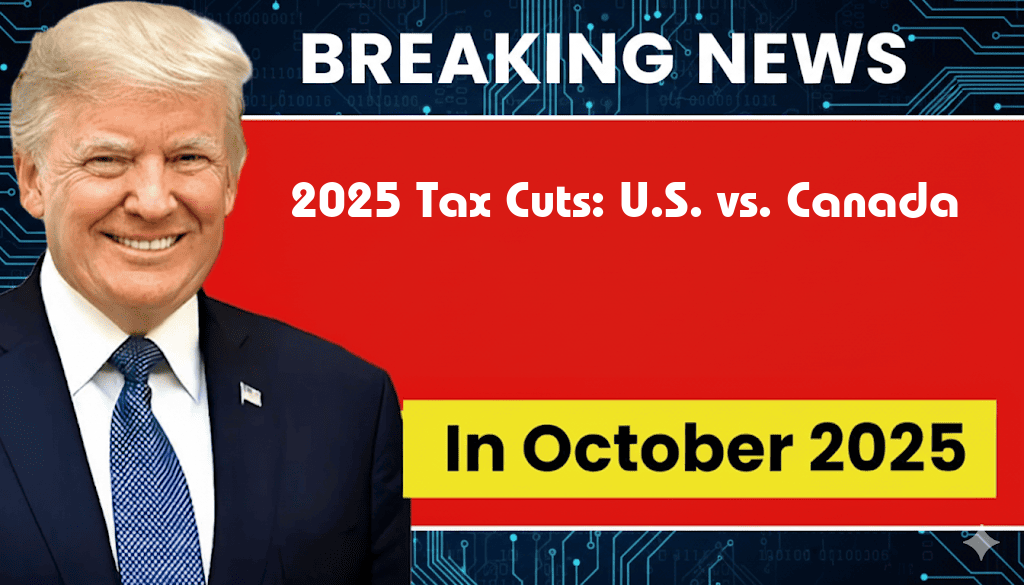2025 Tax Cuts: A Comparative Analysis of $3,752 in the U.S. versus C$5,200 in Canada
As the 2025 tax season approaches, taxpayers in the United States and Canada are bracing for significant changes that promise to impact their financial landscapes. The U.S. government has proposed a tax cut that would average around $3,752 per taxpayer, while Canada is set to implement cuts that could reach approximately C$5,200. This article examines the implications of these tax cuts, how they compare, and what they mean for citizens in both countries.
Understanding the Tax Cuts
- United States: The proposed tax cuts aim to simplify the tax code while providing relief to middle-income families. The cuts will primarily benefit those earning between $50,000 and $90,000 annually.
- Canada: The Canadian government plans to reduce taxes for low- and middle-income earners, with a focus on making essential goods and services more affordable.
Breaking Down the Numbers
| Country | Average Tax Cut | Target Income Bracket |
|---|---|---|
| United States | $3,752 | $50,000 – $90,000 |
| Canada | C$5,200 | $40,000 – $80,000 |
Economic Implications
The economic ramifications of these tax cuts are significant. In the U.S., the proposed cuts are expected to stimulate spending, as lower-income households typically spend a higher percentage of their income. This could inject billions into the economy, bolstering sectors such as retail and services.
Conversely, Canada’s approach is designed to alleviate the financial burdens faced by families dealing with rising costs of living. By providing a more substantial tax cut in Canadian dollars, the government aims to enhance disposable income, thereby promoting consumer spending. Economic analysts believe this could lead to a more robust economic recovery post-pandemic.
Public Reception and Political Landscape
The public’s reception of these tax cuts varies greatly between the two nations. In the U.S., the tax cuts are part of a broader political strategy by the current administration to gain favor among middle-income voters. Some Americans express skepticism, questioning whether the proposed cuts will indeed translate into real financial relief.
In Canada, the response has been more favorable, with many citizens applauding the government’s efforts to address income inequality. The cuts align with the current administration’s platform of supporting working families and could enhance their chances in the upcoming elections.
Long-Term Effects on Taxation
Both nations are grappling with the long-term effects of their respective tax policies. In the United States, concerns linger about how the proposed cuts will affect the federal deficit and overall economic stability. Critics argue that while tax cuts can provide immediate relief, they might lead to increased borrowing and fiscal challenges down the line.
Canada, on the other hand, is using this opportunity to recalibrate its tax system, focusing on sustainability and social equity. Experts suggest that these cuts could pave the way for more progressive tax reforms in the future.
Conclusion
As the 2025 tax cuts unfold in both the United States and Canada, taxpayers will need to stay informed about how these changes may affect their finances. While the proposed cuts offer potential relief, the broader economic implications and political dynamics will play a crucial role in shaping the financial landscape for years to come. For more information on U.S. tax reforms, visit the [IRS website](https://www.irs.gov) and for Canadian tax updates, visit the [Canada Revenue Agency](https://www.canada.ca/en/revenue-agency.html).
Frequently Asked Questions
What are the key differences between the tax cuts in the U.S. and Canada for 2025?
The 2025 tax cuts show a significant difference, with the U.S. offering $3,752 while Canada provides C$5,200. This comparative analysis highlights how each country’s tax policy impacts taxpayers differently.
How are the tax cuts calculated in both countries?
The tax cuts in the U.S. and Canada are calculated based on various factors, including income levels, tax brackets, and deductions. The methodology for determining these amounts varies between the two nations’ tax systems.
What impact do these tax cuts have on average taxpayers?
For average taxpayers, the tax cuts provide financial relief. In the U.S., an average taxpayer saves $3,752, whereas in Canada, the savings amount to C$5,200, potentially influencing spending and investment behaviors.
Are there any long-term implications of these tax cuts?
Yes, the long-term implications of the 2025 tax cuts could affect government revenue and public services. As taxpayers benefit from these savings, governments must balance the budget while maintaining essential services.
How do these tax cuts affect business investments in both countries?
The 2025 tax cuts can encourage business investments as both countries aim to stimulate economic growth. The difference in the amounts may influence where businesses choose to invest, considering the overall tax environment.
